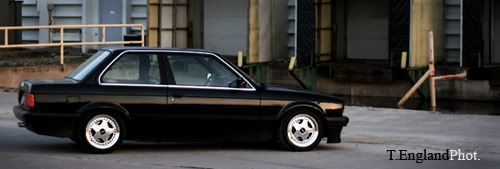HDR pic
Collapse
X
-
-tim
 -Coining hip terms since 10/9/03Originally posted by JordanI like the stance
-Coining hip terms since 10/9/03Originally posted by JordanI like the stanceComment
-
Then it's not possible by your definition. Rolling shots by definition use slow shutter speeds.
An HDR is just the process combining 3 pictures together, one exposed for the shadow detail, one for highlight detail, and one normal exposure in order to get more detail out of the final picture (or at least that's what they're meant to do). Whether you actually take 3 pictures or just use one picture, split into multiple copies with the exposures altered later is irrelevant IMO.Comment
-
-
-
Rolling shots don't always use slow shutter speeds. You can use different speeds for different effects.Then it's not possible by your definition. Rolling shots by definition use slow shutter speeds.
An HDR is just the process combining 3 pictures together, one exposed for the shadow detail, one for highlight detail, and one normal exposure in order to get more detail out of the final picture (or at least that's what they're meant to do). Whether you actually take 3 pictures or just use one picture, split into multiple copies with the exposures altered later is irrelevant IMO.
Nice pic. opComment
-
There are a lot of variables to consider though. It is not as clear cut as that. A large aperature would blur the background as well. It also depends if you are moving with the car (like shooting from another car) or are you standing on the side of the road. Yes, a very fast shutter speed would not help in your cause but there is a big range of variables there that you can play with to achieve what you want.E30 Dinan Turbo

Comment
-
You can't really create a real "high dynamic range" image out of one single image. Post processing is really only working with what you got in the first place. Sure you can manipulate a lot of things in post process. But bracketing in post process is not the same as bracketing while shooting. Your single image dynamic range data cant be increased. Thats why you shoot different shots at different exposures. You have a different dynamic range for each image. When you combine them, you achieve a greater dynamic range image then any of the shots by themselves. Post processing will give you a great photo, but it will pale in comparison to a true high dynamic range image.E30 Dinan Turbo

Comment
-
It's not exactly the same if done in post, but it's close enough for HDR work. If you want a rolling shot done in HDR it's your only option.You can't really create a real "high dynamic range" image out of one single image. Post processing is really only working with what you got in the first place. Sure you can manipulate a lot of things in post process. But bracketing in post process is not the same as bracketing while shooting. Your single image dynamic range data cant be increased. Thats why you shoot different shots at different exposures. You have a different dynamic range for each image. When you combine them, you achieve a greater dynamic range image then any of the shots by themselves. Post processing will give you a great photo, but it will pale in comparison to a true high dynamic range image.
I'm not going to derail the thread further by getting into the depths of advanced photography. I was just trying to explain how you would create an HDR image from a rolling shot.Comment




Comment